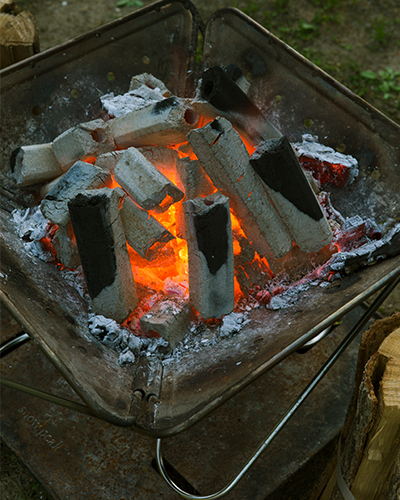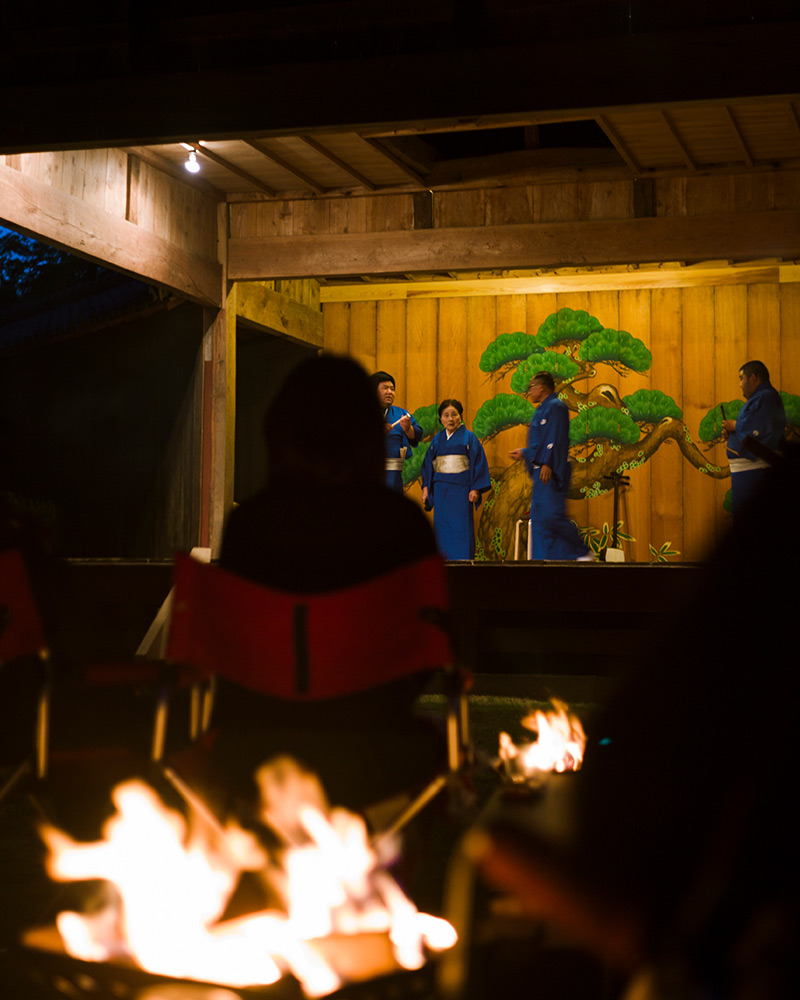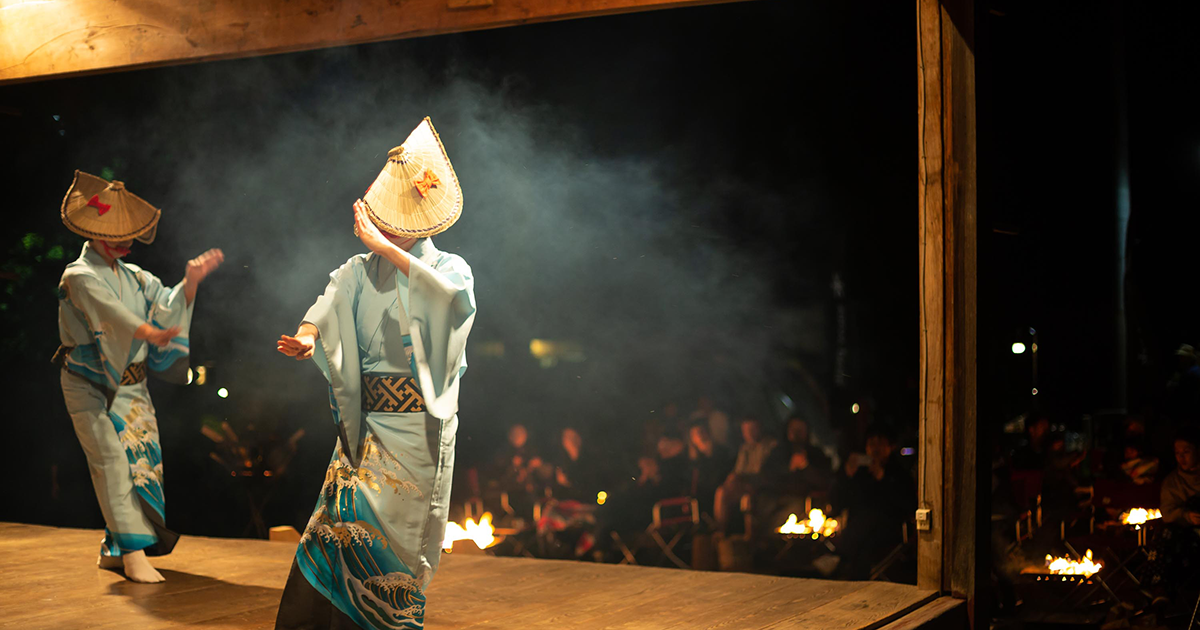Into the LocalWearing the Locale
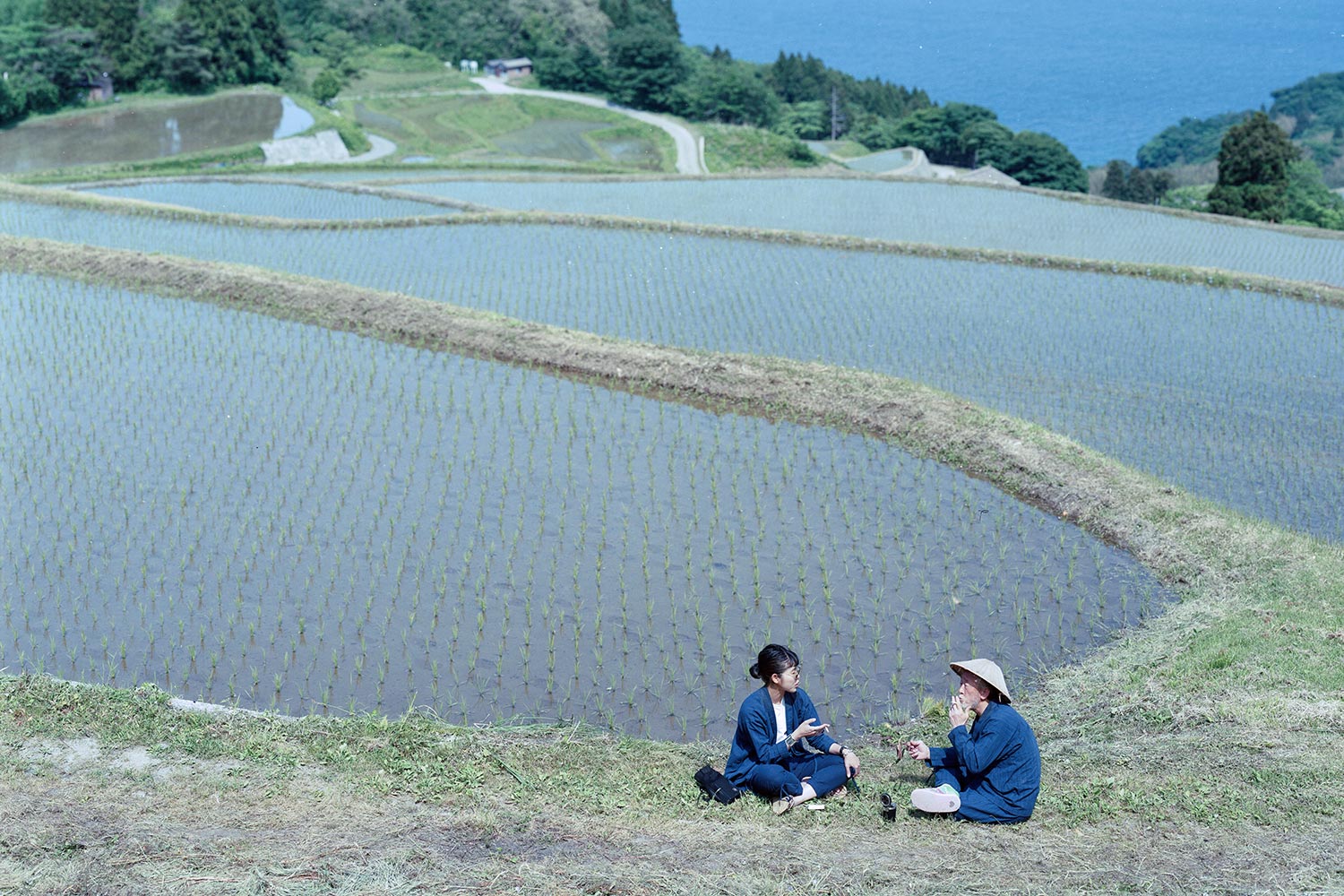
An encounter with an old man
that grows rice in the Tanada (terraced rice fields) in
Sado inspired LOCAL WEAR, which puts local production
and local consumption of garments into practice.
FIELDWORK is a place for not only staff, but also customers and any other interested parties, to collaboratively create the future of Snow Peak Apparel. LOCAL WEAR was launched in April 2018, during the 60 th anniversary of the brand. We asked Snow Peak Director/Designer Lisa Yamai about how the new project, designed with the next 60 years in mind, was inspired by an encounter with Soichiro Oishi from the Sado Tanada Conference.
- Lisa Yamai
- Put simply, LOCAL WEAR is a project to realize local production and consumption of garments. Limiting itself to production in specific regions of Japan, it uses local manufacturing techniques to produce workwear that suits the local culture for people working in the community where the clothes are produced. Through work experience tours intended to help sustain local culture and manufacturing, we considered the relation between local labor and work wear, took the shortage of successors for local industries into consideration, and wanted to provide an opportunity for people “to wear the locale.”
- Soichiro Oishi
- Ohhhh well, that sure sounds complicated. So you mean the rice planting was a part of all that?
- Lisa
- That’s right. The first endeavor was carried out in Sado, Niigata, my hometown. Yesterday, I wore LOCAL WEAR made with a Kasuri-dyeing plant in Tochio, camped on the grounds of a shrine with a Noh stage, a key symbol of Sado culture, and today I planted rice under your tutelage. The lunch prepared by the locals was also delicious!
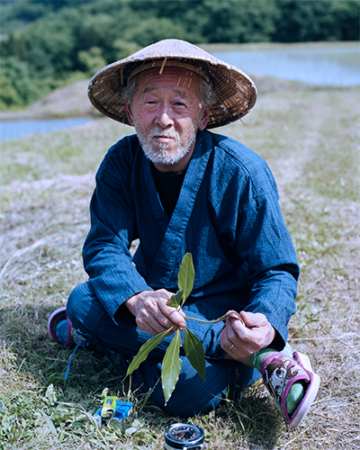
Sado Tanada Conference’s Soichiro Oishi, also known as “old man, ” who inherited his Tanada rice terraces in Iwakubi from his parents

Clothes designed for experiencing lifestyles
- Oishi
- When’d we first meet then?
- Lisa
- June two years ago. Tatsuya Sato from the Sado Tourism and Cultural Exchange Bureau introduced us. At first I hadn’t thought about experiencing work in the rice fields, or anything like that. I’d been thinking of LOCAL WEAR as a way to convey local manufacturing methods and sartorial styles. Then the samples of the clothes came, and I was looking for models. It was a totally new project, so I thought we needed tools to convey it visually in an easily understandable way. I told Sato-san that I was looking for local farmers and he brought you up.
- Oishi
- Oh right, yes, that’s how it happened. Sato-san said it would create publicity for the Tanada, so I waltzed right out. We had just established the Sado Tanada Conference and I’d publicly said that I’d do anything, even join the circus if it meant we could spread the word about the region. Country folk, you know, they tend to be shy, right? They’re like, “Hmmm, TV, I don’t know if I can do that…” But someone has to do it and seize the opportunity. I didn’t know the first thing about Snow Peak, but you turned out to be pretty interesting and I agreed to model for you.
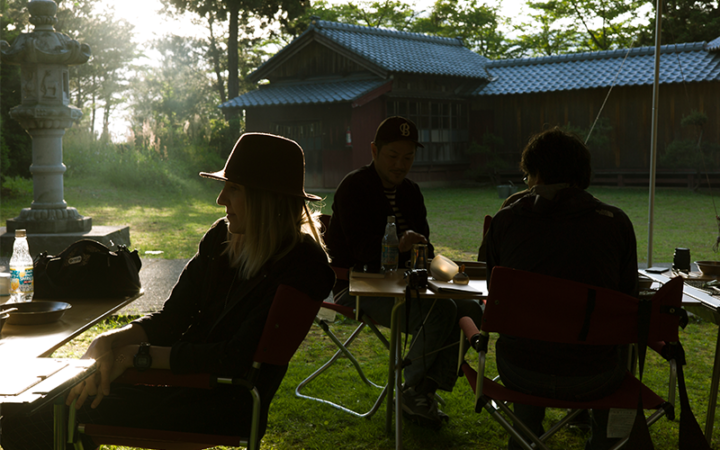
On the first night, participants camped on the usually closed grounds of a shrine which featured a Noh theater–a Sado Island cultural heritage.
- Lisa
- We’ve only met four times, but those times have been intense! When we first met, I was calling you “Oishi-san,” and you immediately said, “Just call me ‘old man.’” And I’ve called you that since. I don't know of any other person who fits the name so well.
- Oishi
- The old man from Sado Tanada. Before I turned 60, young people I knew called me “pa,” but when I turned 60, I changed my name to “old man.” “Oishi-san” is so formal and makes things awkward for both of us. And I am an old man after all. And you lot made this old man change from one outfit into another in the middle of the winter!
- Lisa
- Sorry, sorry! But you seemed pretty into it at the time!! During that shoot, you first showed me the rice terraces here in Iwakubi, where we held the rice-planting experience tour. As I listened to your stories about all that you’ve done for the rice terraces and the lack of successors, and other current circumstances surrounding the terraces, I started to feel like it was my mission to “do something for this old man” because there’s something similar going on in the apparel industry in Japan. Then I thought about things for a year and began to realize that similar things were happening in local industries all over Japan. That’s where the idea of the LOCAL WEAR project, which would be more than just apparel, came from. When we were shooting and you said, “My mother used to dress like this when she was farming, ” it gave me the idea to have our customers actually experience working in the rice field in Sado to see and experience that particular lifestyle.
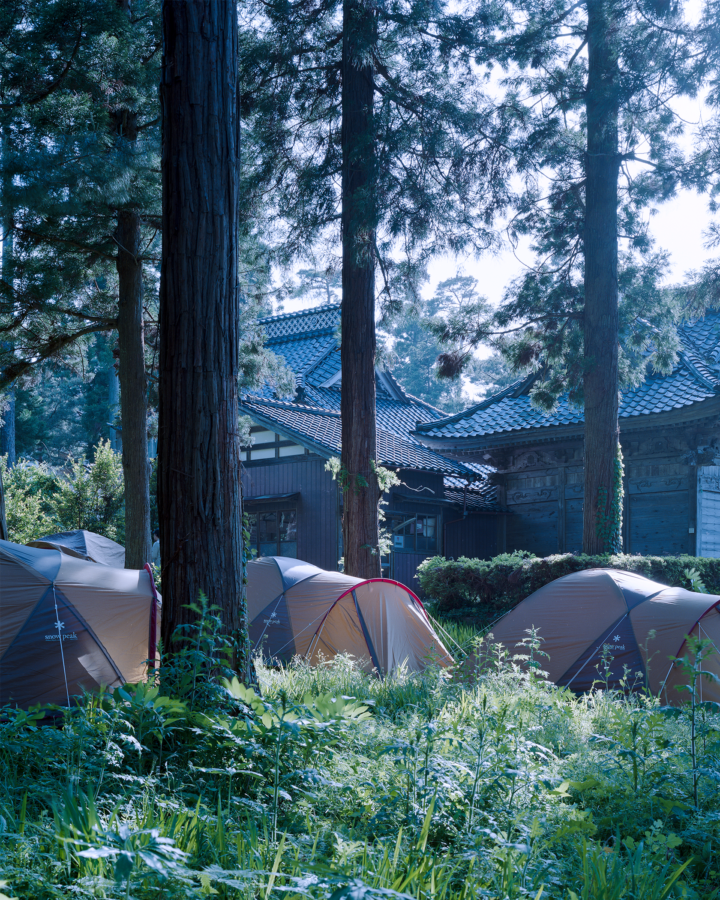
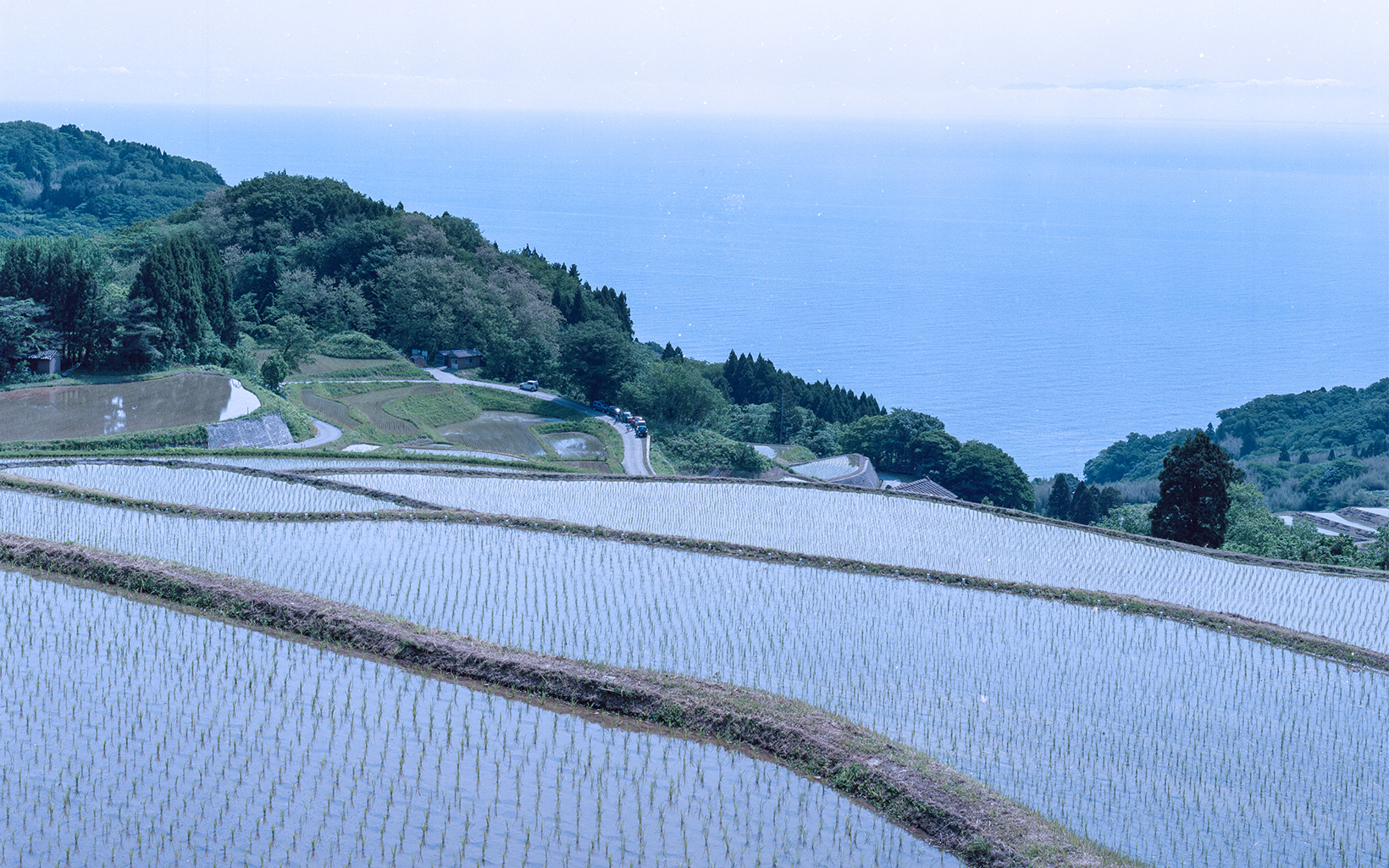
Hearing you talk in the Tanada in Iwakubi, I really feel that there are many parallels between what I want to communicate through LOCAL WEAR and the state of agriculture in Tanada.
The difference between rice terrace farming and Mercedes-like farming
- Oishi
- I hated that I was born in Iwakubi and had to carry on my parents’ rice terrace farming business so I escaped to Tokyo. Farming, I thought, was hard work, not very lucrative, and totally uncool. I returned to Sado when I was 32 and saw that the rice terraces, which constitute 40% of all farmland in Sado, were in much worse shape than when I had escaped to Tokyo. With just old folks left and no successors, some were even using their pension to maintain their rice terraces. The terraces are a part of Sado’s original landscape and to sustain ourselves here, I decided that we needed to involve the government office, other industries, the media, and whoever else we could to promote the area. And now we’re taking various actions while also having fun. When Sado, including its rice terraces, was registered as a UNESCO World Heritage site, we established the Sado Tanada Conference.
- Lisa
- And it’s starting to attract a fair number of young people, right?
- Oishi
- About 500 young people have come to this old man to learn about the environment and “local living”;is that what it’s called? Tanada farming is not logical in terms of productivity and workload. But according to the Japan Agricultural Cooperatives, even rice produced on giant flat farmland with a 10 million Mercedes-like combine harvester is considered “Sado Rice.” If they’re labeled as the same thing, there’s no way Tanada farming can compete. That’s why we offer mail order through the Sado Tanada Conference website and directly supply kindergartens that understand our history and production process. Also, when we’re talking to consumers, the notion of “safe and reassuring food” comes up a lot. We want and are aiming for that, but usually “safe and reassuring” is followed by “and inexpensive.”Now that doesn’t make much sense, does it? If you want to make something safe and reassuring, it takes a lot of work. If cost is privileged in the evaluation criteria, we can’t compete. So, my proposal is to start having as many Japanese people as possible imagine, and if they can, experience this landscape, and farming it to understand why Tanada rice is expensive and why it has to be that way to be sustainable.
- Lisa
- Hearing you talk in the Tanada in Iwakubi, I really feel that there are many parallels between what I want to communicate through LOCAL WEAR and the state of agriculture in Tanada. I think that fewer and fewer people are able to determine good from bad for themselves. Too many people uncritically accept whatever advertisements and other mainstream media tell them. Being an outdoor person means going out in the field to see for one self whether something fits one’s core values. That’s what Snow Peak has always done. In outdoor culture, or any other field, for that matter, I think it’s crucial to see and feel for oneself and to trust one’s own sensibility. This is the essential message that Snow Peak needs to convey. What you’re doing is essential and so correct. That’s why I had so many people trek out to Sado to experience a part of life here.
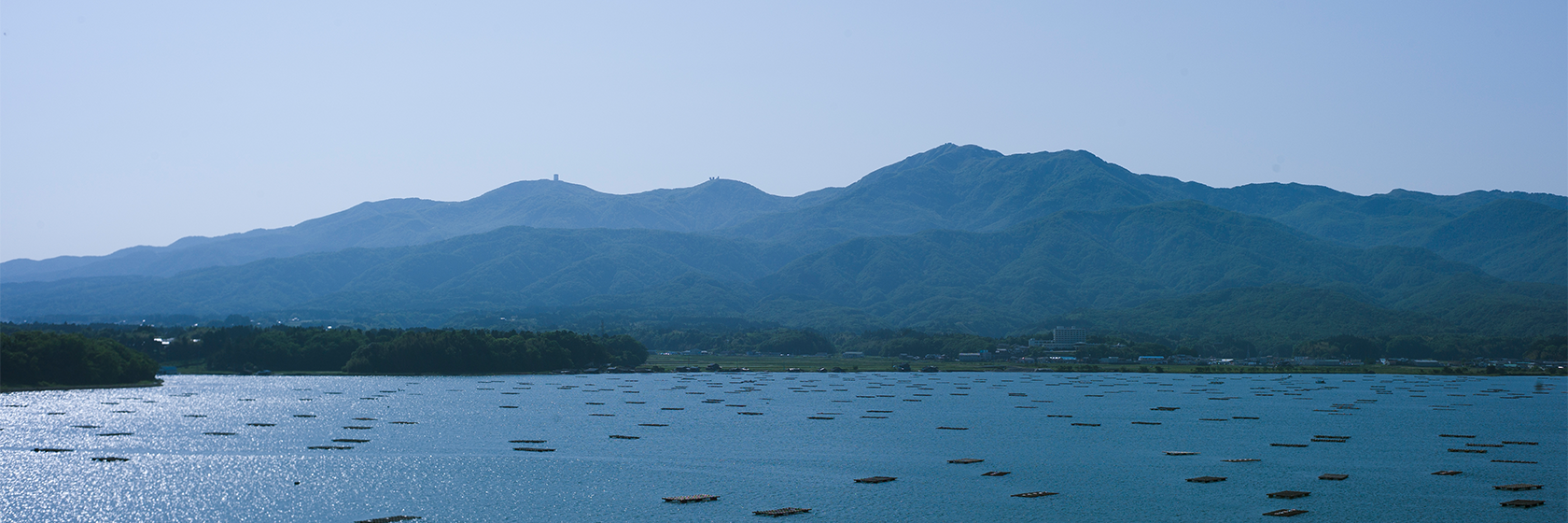
Showing consideration for the marginal
- Oishi
- You know how we have this term “marginal village” ? The term was coined by a Tokushima University professor, but I first heard it at a lecture over 10years ago given by an honorary Waseda University professor who was doing Tanada-related research. After the lecture, I went up to him and said, “Professor, I know what you’re saying, and the actual residents of these villages are painfully aware of their marginality; we don’t need to have it pointed out by academics. If you want to support these ‘marginal villages,’ you should come up with a less demeaning term for them.”
- Lisa
- Yes, “marginal” is a bit harsh, isn't it?
- Oishi
- I just think that he could’ve shown a little more respect and consideration, you know what I mean? And I heard that he’s been telling this anecdote of me pointing that out to him in all his lectures ever since! I’d like people to interact with Tanada with respect and kindness. We live here. We know our existence is marginal! But it hurts to have others point it out to us.
- Lisa
- If people were to come to Sado, experience Tanada rice farming, talk to you, and dine with you, they would know that the village is not only marginal but also vibrant. In October, we’re going to organize a harvesting tour for the same people who participated in the Tanada rice planting tour, so I hope we can rely on you to convey the liveliness of the village.
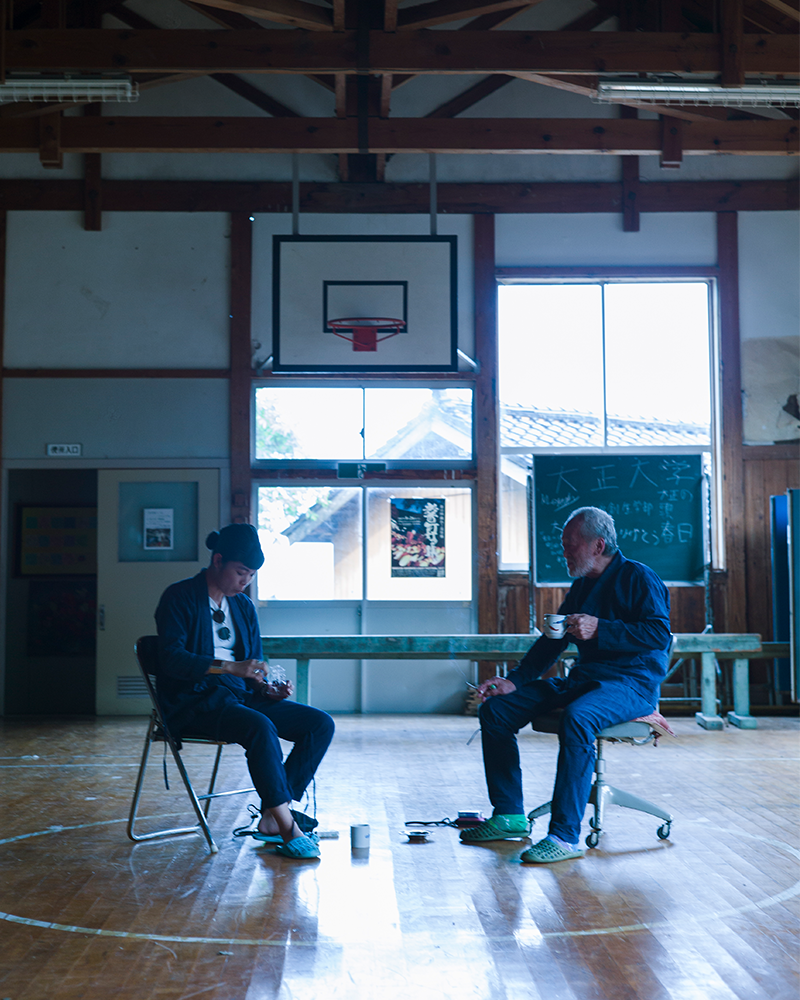
Oishi-san works out of a former elementary school, which he attended. He receives volunteers here and uses it as a base from which to carry out various regional revitalization activities.
photography : Ko Tsuchiya
Edit : Kei Sato
